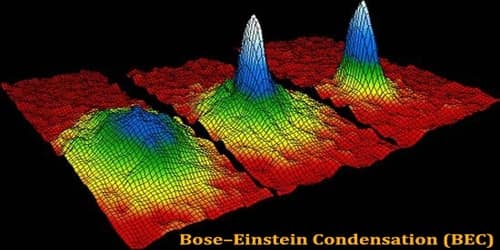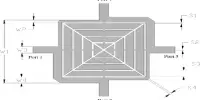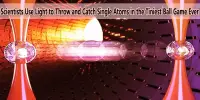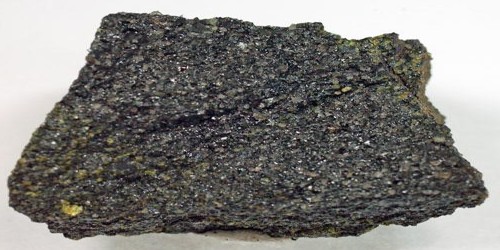Bose-Einstein Condensation (BEC)
Bose-Einstein condensation (BEC) in networks is a phase transition observed in complex networks that can be described with the same mathematical model as that explaining Bose-Einstein condensation in physics. It is a state of matter in which separate atoms or subatomic particles, cooled to near absolute zero (0 K, − 273.15 °C, or − 459.67 °F; K = Kelvin), coalesce into a single quantum mechanical entity—that is, one that can be described by a wave function—on a near-microscopic scale. This form of matter was predicted in 1924 by Albert Einstein on the basis of the quantum formulations of the Indian physicist Satyendra Nath Bose.
In physics, a Bose-Einstein condensate is a state of matter that occurs in certain gases at very low temperatures. Any elementary particle, atom, or molecule, can be classified as one of two types: a boson or a fermion.
Back in the 1920s, Albert Einstein and Indian theoretical physicist Satyendra Nath Bose predicted that quantum mechanics could force a large number of particles to behave in concert as a single unit, one massive particle. Almost 100 years later, the first Bose-Einstein condensate was created from a gas of alkali atoms!
A Bose-Einstein condensate is, therefore, a quantum phenomenon characteristic of boson particles. Nevertheless, a similar type of condensation transition can occur also in off-equilibrium classical systems and in particular, complex networks. In this context, a condensation phenomenon occurs when a distribution of a large number of elements in a large number of element classes becomes degenerate, i.e. instead of having an even distribution of elements in the classes, one class (or a few classes) become occupied by a finite fraction of all the elements of the system.
Although it had been predicted for decades, the first atomic BEC was made only in 1995, when Eric Cornell and Carl Wieman of JILA, a research institute jointly operated by the National Institute of Standards and Technology (NIST) and the University of Colorado at Boulder, cooled a gas of rubidium atoms to 1.7 × 10−7 K above absolute zero. Along with Wolfgang Ketterle of the Massachusetts Institute of Technology (MIT), who created a BEC with sodium atoms, these researchers received the 2001 Nobel Prize for Physics. Research on BECs has expanded the understanding of quantum physics and has led to the discovery of new physical effects.
Network theory is a recent field of research which investigates methods of characterizing and modeling real complex networks. In particular, it has been found that many complex networks have universal features like the small world property and a scale-free degree distribution. The scale-free degree distribution of networks can be caused by the “preferential attachment” mechanism.
Information Source:
















